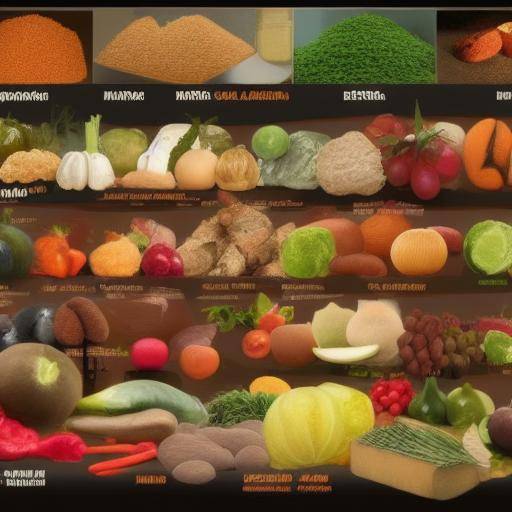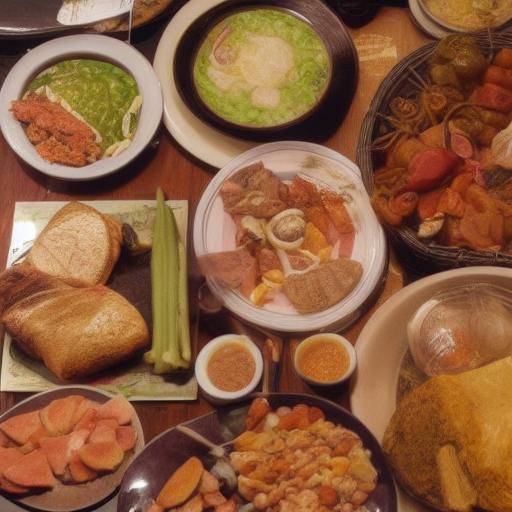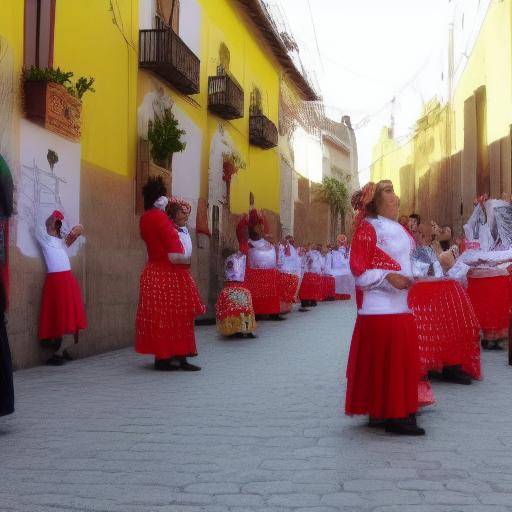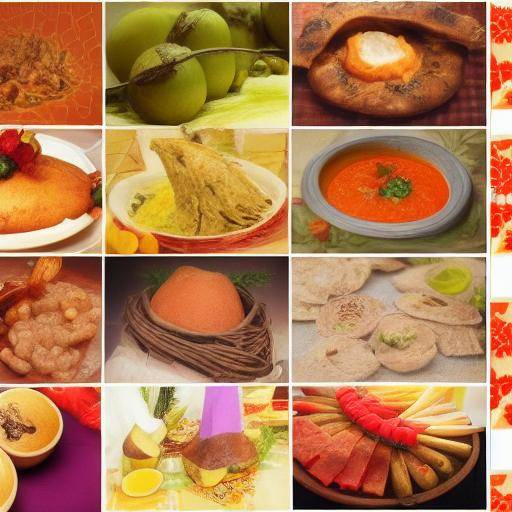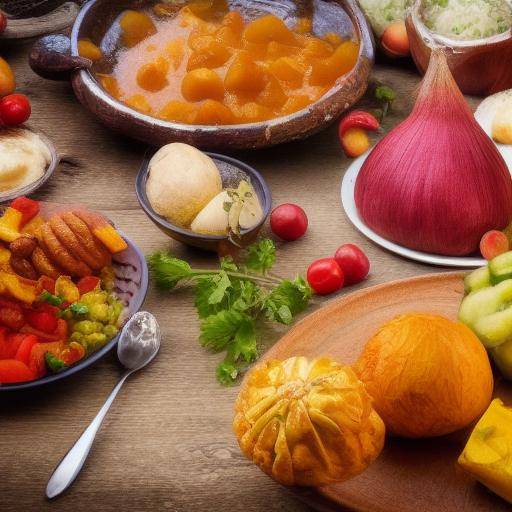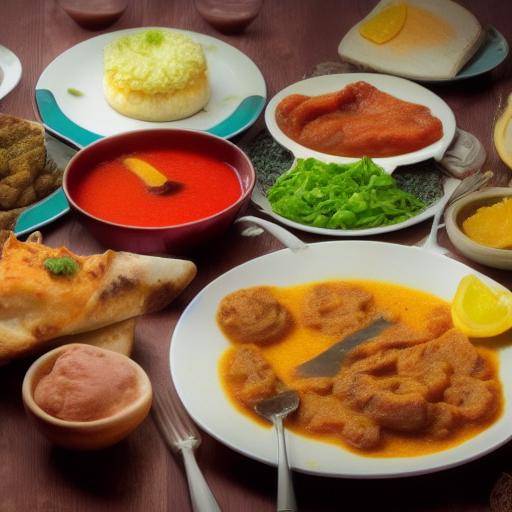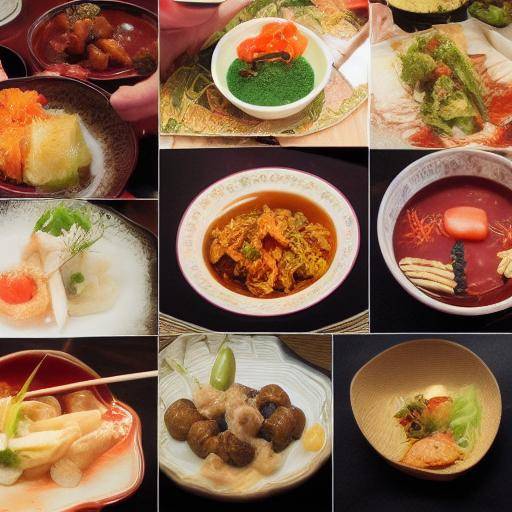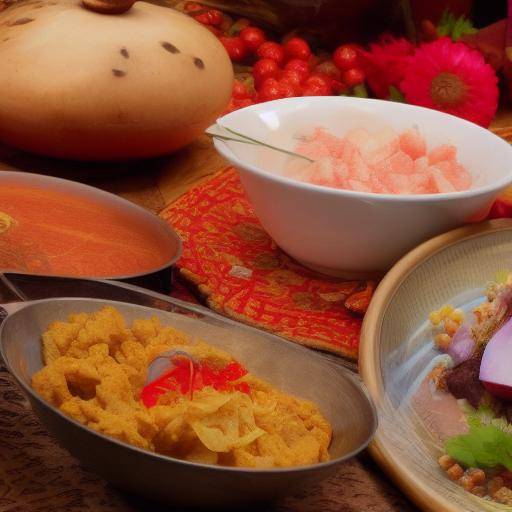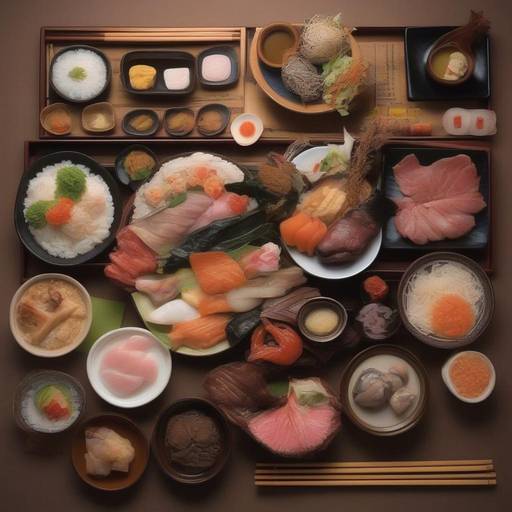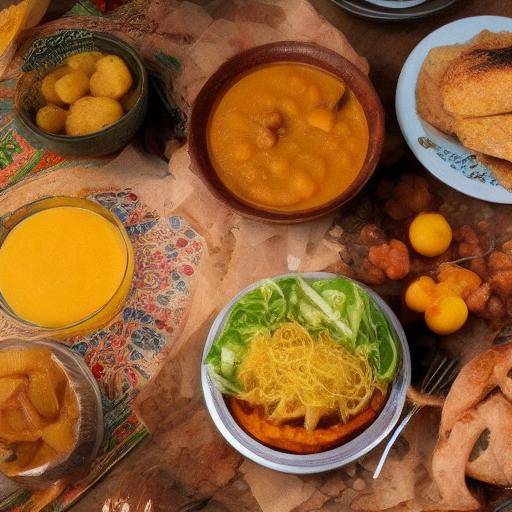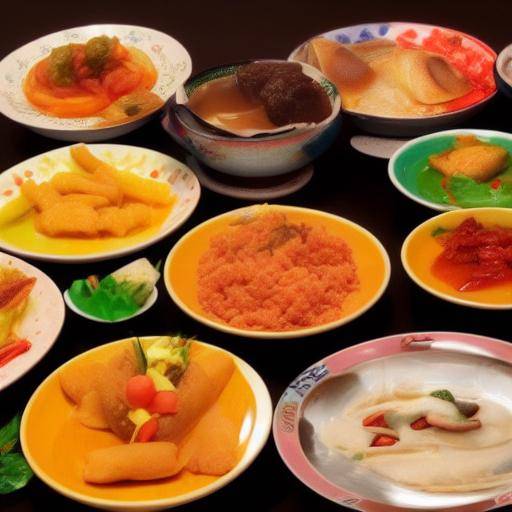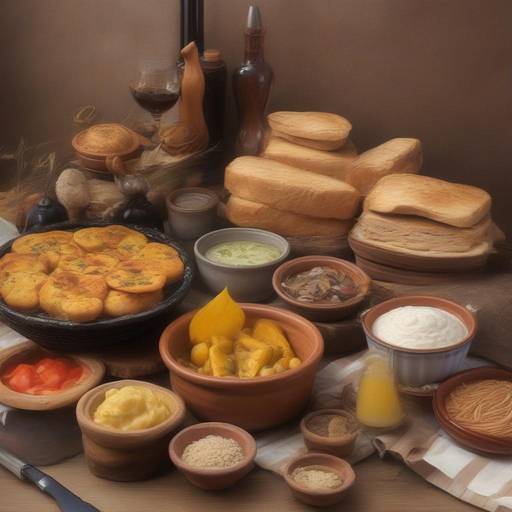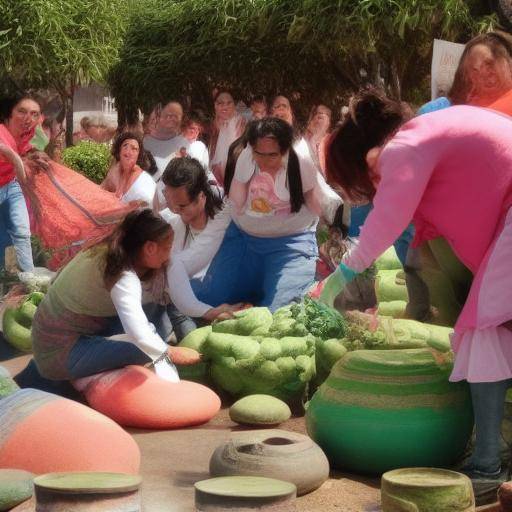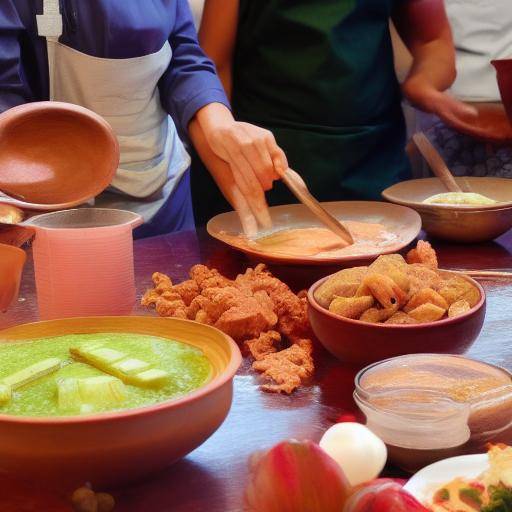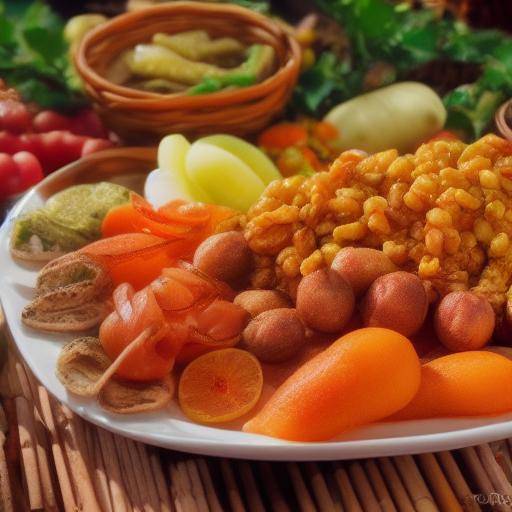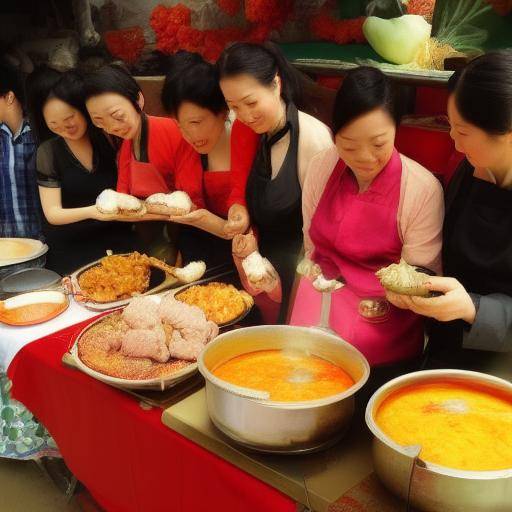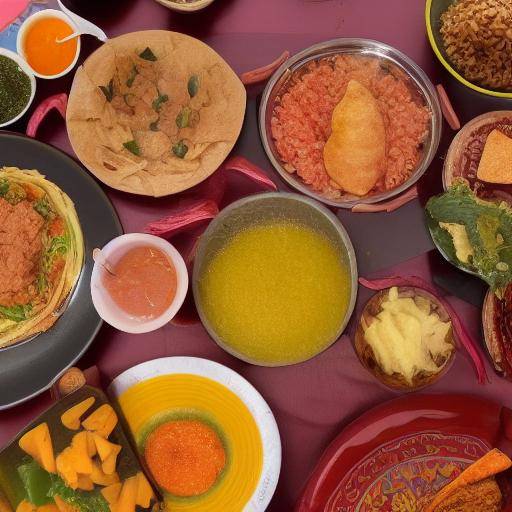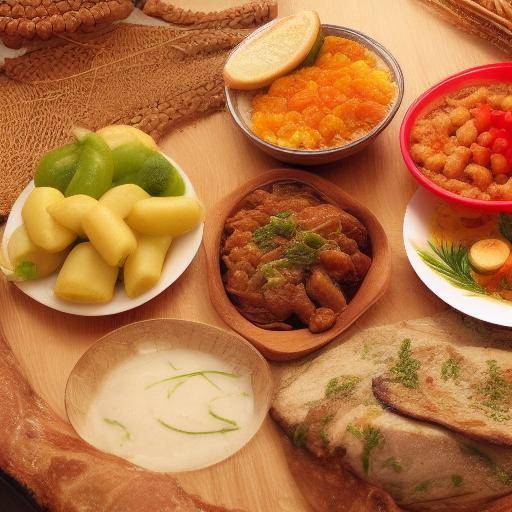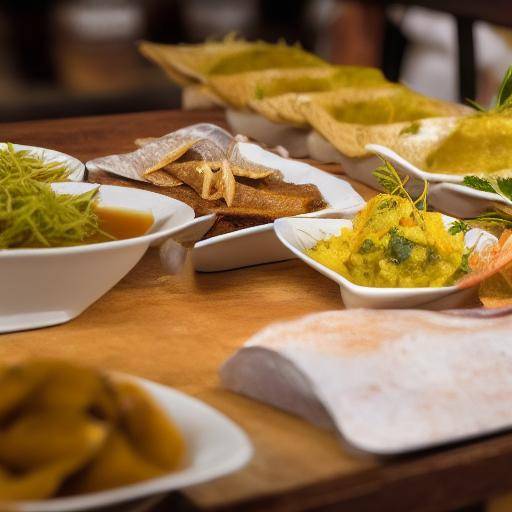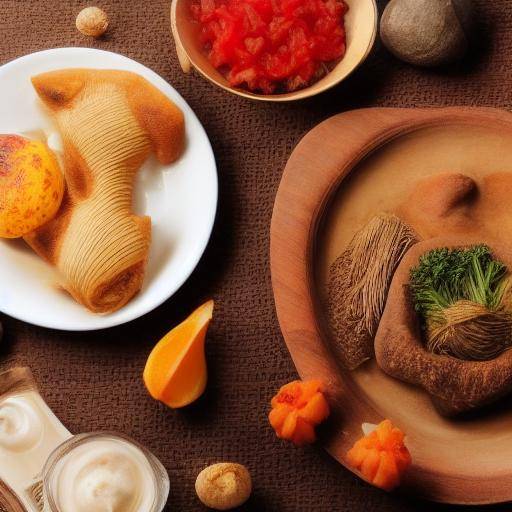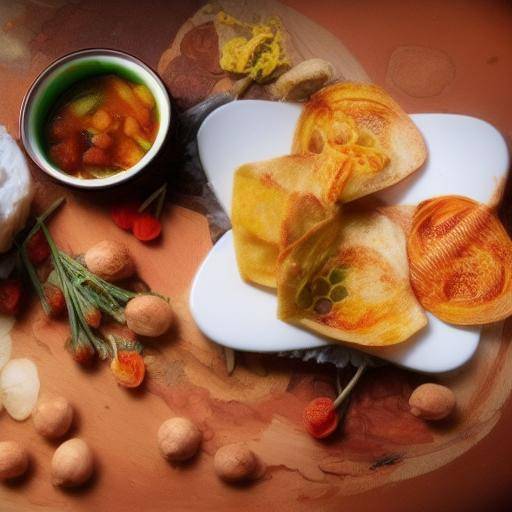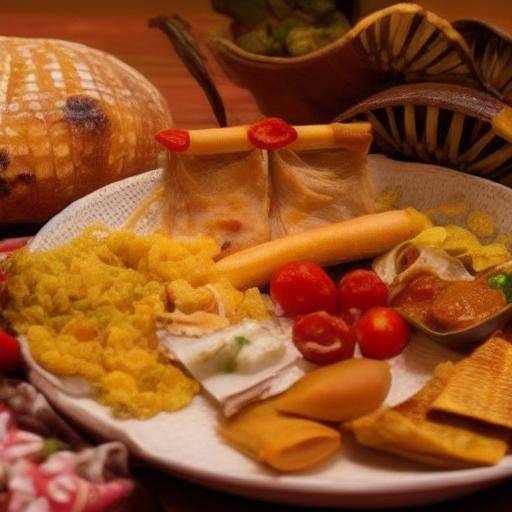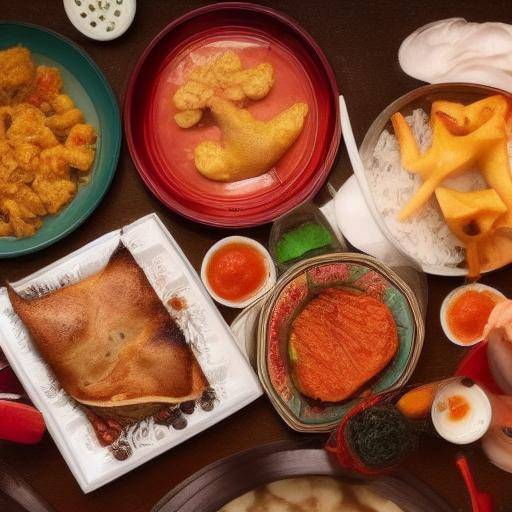
The culinary world of Hindu culture is a fascinating crucible of flavors, colors and aromas that reflect the diversity and historical wealth of India. Food is not only a basic need in the daily lives of Hindus, but also plays a crucial role in their cultural identity and religious celebrations. In this article, we will explore the gastronomic traditions rooted in the ancient Hindu culture, highlighting its historical importance, current influences, and its profound meaning in Indian society.
Introduction
The impressive culinary legacy of Hindu culture is a manifestation of rooted traditions that have been transmitted over generations. From the elaborate religious festivities to the cotidianeity of the home, food occupies a central place in the lives of Hindus. In this article, we will take a deep look at the gastronomic traditions in Hindu culture, exploring its rich history, emblematic ingredients, culinary practices, and its cultural significance in modern India.
History and Background
India's culinary history dates back to millennia. The gastronomic traditions in Hindu culture have evolved through various cultural influences, from the ancient civilizations of the Indo valley to the successive waves of invasions and migrations that have left their mark in Indian cuisine. The variety of spices, herbs, fruits and vegetables used in the current gastronomy reflects the geographical and climatic diversity of the Indian subcontinent.
Food in India has been closely linked to religious and philosophical beliefs, such as Hinduism, Jainism, Buddhism, Sikhism, and Islam, which have influenced culinary practices. Food classification in "satvik" (puros), "rajasic" (active), and "tamasics" (deteriorated) according to ancient texts has shaped food preferences and taboos in India.
Over the centuries, Indian cuisine has adopted and adapted ingredients and cooking techniques from various cultures, including Persian, Mongol, British, Portuguese and more recently, global influences. Trade in spices during the colonial period played a significant role in spreading Indian cuisine worldwide.
Detailed Analysis
Indian cuisine is known for its complexity of flavors, resulting from the skillful use of a wide range of spices and seasonings. Cooking methods, which include tandoor, curry, bhuna and tikka, add depth and texture to culinary preparations. Each region of India has its own culinary specialties, ranging from the vindaloo spicy of Goa, to the sweet rasgulla of Bengala.
Despite its diversity, Indian cuisine shares certain fundamental elements, such as the extensive use of rice, lentils, paneer (fresh cheese), yogurt, chiles, saffron, cinnamon, cardamom, cumin, cilantro, and turmeric, which contribute to the richness of its flavors. The influence of the vegetarian diet derived from religious and spiritual practices has contributed to the popularity of dishes based on vegetables and vegetables.
Food in Hindu culture transcends the purely physical, since culinary practices are considered sacred and full of symbolism. Religious festivals, such as Diwali, Navaratri, Holi, and Durga Puja, offer an opportunity to prepare traditional dishes that celebrate the season, harvest, and mythological legends.
Exhaustive examination
Hindu culture attaches great importance to food preparation and consumption, with emphasis on harmony, nutrition, and balance. Food is considered a divine gift and served with reverence, reflecting the philosophy of respect for natural resources and the bond between man and nature.
Indian cuisine is not only known for its exquisite flavors, but also for its health benefits. The use of spices such as turmeric, ginger, cardamom, and cumin has been associated with medicinal properties, and has been shown to promote digestive health, immunity and general well-being.
Despite its culinary wealth, Hindu culture faces challenges in preserving its gastronomic traditions in a globalized world. The influence of fast food, changes in eating habits, and the availability of processed products have led to a decrease in the consumption of traditional home meals. However, efforts to promote Indian cuisine, both nationally and internationally, seek to keep gastronomic traditions alive.
Comparative analysis
By comparing gastronomic traditions in Hindu culture with other cuisines in the world, it is collated that Indian cuisine is distinguished by its regional diversity and its holistic approach to nutrition and health. While spices and seasonings are fundamental in Indian cuisine, other cuisines can focus more on specific cooking techniques, such as the use of Mediterranean influences in Spanish or Italian cuisine. In addition, the strong influence of religion in Indian cuisine distinguishes it from other cultures, where religious precepts have a minor impact on culinary practices.
Practical Tips and Accessible Tips
If you want to explore the Hindu cuisine in your own kitchen, here are some practical tips:
- Experience spices and herbs to create combinations of unique flavors.
- Learn the basics of Indian cuisine, such as curry preparation, tandoor use, and homemade bread making.
- It celebrates Hindu holidays preparing traditional dishes that reflect the cultural and religious significance of the occasion.
Industry & Expert Reviews
The culinary experts agree that Indian cuisine has experienced a global resurgence, with a renewed interest in its authentic culinary traditions. The adoption of vegetarian and vegan diets, which incorporate the principles of Indian cuisine, has contributed to its popularity. Gastronomic chefs and critics point out that the diversity and complexity of flavors in Indian cuisine present challenges and opportunities for innovation in the gastronomic industry.
Case Studies and Real Life Applications
One notable case is the impact of Indian restaurants abroad, which have enriched the world culinary scene and have brought the flavors and techniques of Indian cuisine to new audiences. Food and start-up companies have capitalized on the popularity of Indian cuisine by offering gastronomic products and experiences that promote authenticity and sustainability.
Future Trends and Predictions
Future trends in Indian gastronomy include increased exploration and revitalization of traditional recipes, innovative use of local ingredients and sustainable preparation methods, and the integration of Indian cuisine into the global cuisine of high cuisine. Indian culinary traditions are expected to continue to gain the recognition and appreciation they deserve worldwide.
Conclusion
In conclusion, gastronomic traditions in Hindu culture are a tribute to India's rich cultural heritage, ancestral wisdom, and culinary diversity. As Indian cuisine continues to captivate palates around the world, it is crucial to preserve and promote these gastronomic traditions for future generations. From its historical roots to its contemporary applications, Indian cuisine remains a source of inspiration and satisfaction for lovers of good food.
Frequently asked questions
What are some emblematic dishes of Indian cuisine?
The Indian cuisine has a wide variety of emblematic dishes, including tandoori chicken, biryani, paneer tikka, saag paneer, butter chicken, dosa, idli, chole bhature, rogan josh, and gulab jamun, among others. Each region of India has its own culinary specialties that reflect its unique cultural heritage.
How do regional influences in Indian cuisine differ?
Regional influences are reflected in the ingredients, cooking methods, and distinctive flavors of Indian cuisine. For example, the North Indian cuisine tends to be richer and creamy, with a greater emphasis on the use of dairy products, such as paneer, nata, and yogurt, while the South Indian cuisine stands out for its dishes based on rice, coconut, and fresh spices.
What is the role of spices in Indian cuisine?
Spice plays a key role in Indian cuisine, providing a wide range of flavors and aromas to dishes. In addition to enhancing the taste of food, many of the spices used in Indian cuisine have been associated with health benefits, which has led to growing interest in their medicinal properties.
What is the importance of food in Hindu religious holidays?
Food plays a central role in Hindu religious festivities, serving as a means of honoring the gods and strengthening community ties. The dishes prepared during these festivities usually have symbolic meaning and are elaborated according to traditional religious and ritual practices.
Why is the vegetarian diet so prevalent in India?
The vegetarian diet has deep roots in Indian culture and religious traditions. Vegetarianism is practiced by a large part of the population, motivated by religious precepts, ethical considerations, and the availability of a wide variety of fresh and nutritious vegetable ingredients.
How has globalization impacted in Indian cuisine?
Globalization has brought Indian food to all corners of the world, contributing to the popularity of its distinctive flavors and unique culinary techniques. In turn, globalization has brought international culinary influences to India, further enriching its diverse gastronomic scene.
In short, gastronomic traditions in Hindu culture represent a celebration of the diversity, spirituality, and hospitality that characterize India. From the traditional dishes transmitted from generation to generation to contemporary culinary innovations, Indian cuisine is a true culinary treasure that continues to delight and surprise the diners around the world.



